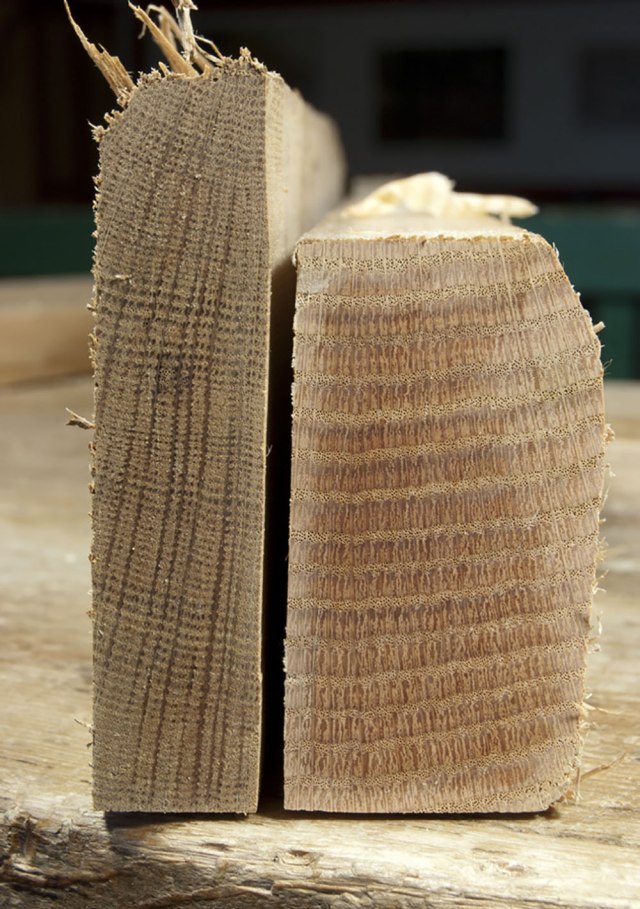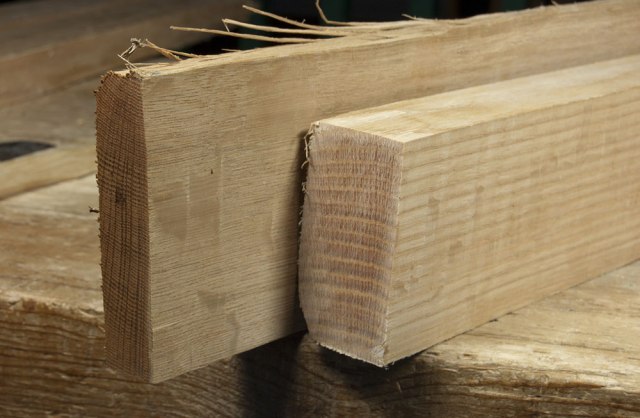
This is an excerpt from “Make a Joint Stool from a Tree” by Jennie Alexander and Peter Follansbee.
If you have a number of oak logs to choose from, then you can go through the checklist of factors that affect the work ahead. Once you find a straight grained log that’s nice and even with little or no taper, has a centered pith in a mostly round shape, and no twist in the bark – then you’re ready to work that log. But there’s one more thing. You can go even further and look at the rate of growth in the tree’s annular rings. Fast-growing oak has widely spaced annular rings; sometimes up to 1/4″ per year. This timber is exceedingly strong because it has fewer rings, which create a great concentration of the dense latewood that grows in the summer. But the resulting timber is visually distracting. Its radial face comes out looking heavily striped. It can also be difficult to work; it has an uneven texture resulting from the widely spaced transitions between the earlywood and latewood.

The slow-grown oak is more even textured, both visually and for working. While technically weaker than its fast-grown counterpart, slow-grown oak is still well-suited for joined work. This furniture is grossly overbuilt by stress standards, so the decrease in strength is not a factor. The benefit is the consistent texture, ease of working and a closer visual match to the timber used in 17th-century work done in New England. You can’t always get what you want, but if you are faced with two otherwise evenly matched logs, try the one that grew slower. The only thing better than riven radial oak is slow-grown riven radial oak.
— MB